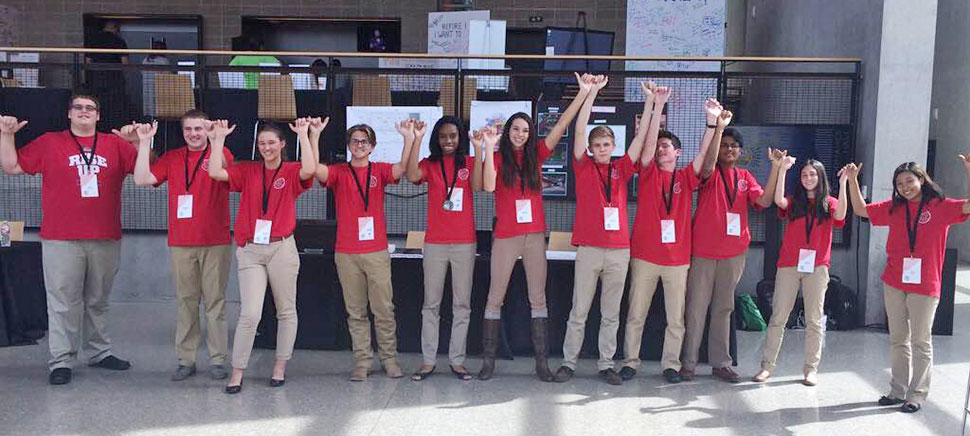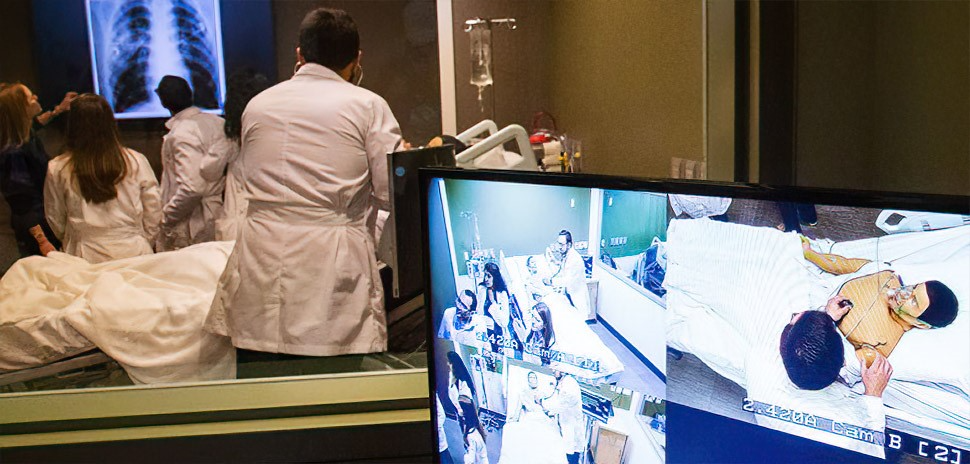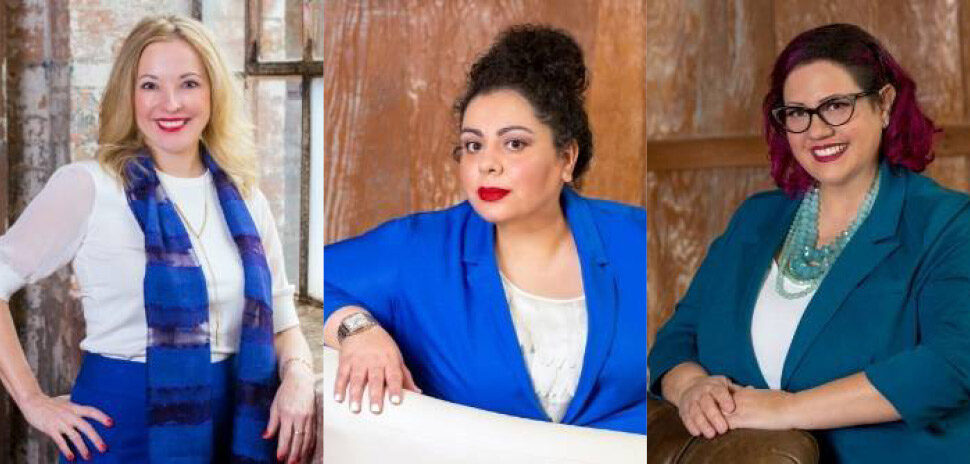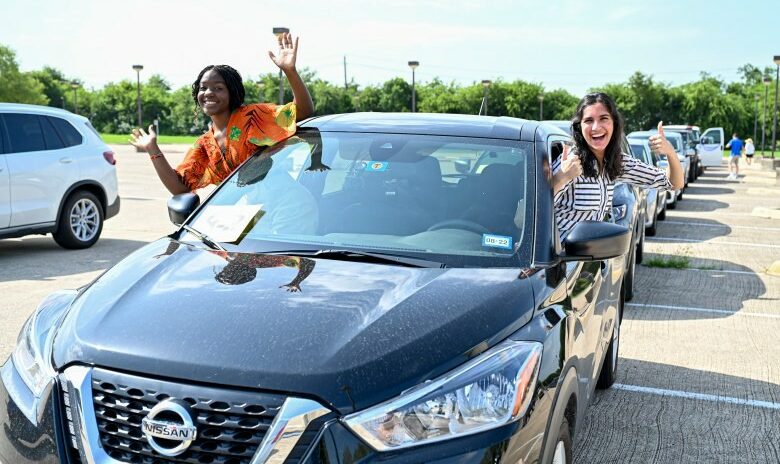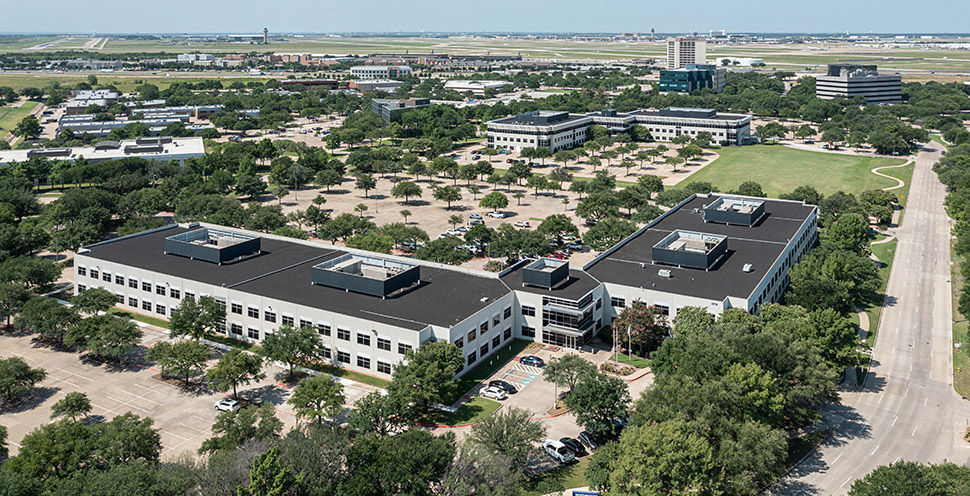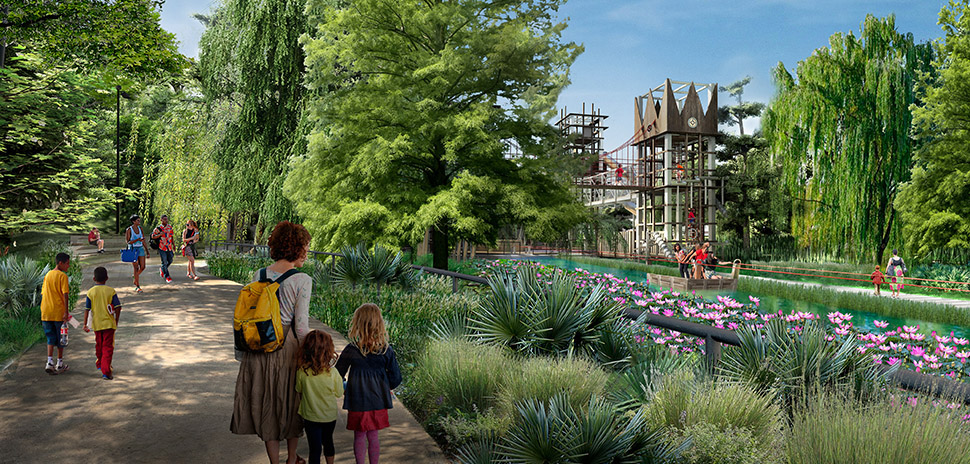Two years ago, McKinney Boyd High School engineering teacher Sherri Hurley began tapping the potential of the young scholars in her school’s engineering club.
“I challenged them to leave a legacy and to do something big,” says Hurley, a veteran teacher of 17 years who sponsors the McKinney Boyd engineering club.
“I challenged them to leave a legacy and to do something big,” says Hurley, a veteran teacher of 17 years who sponsors the McKinney Boyd engineering club.
Following Hurley’s charge, the club’s 16 members came up with the idea to create a living roof for their school, where classes could take place, kids could hang out, and a garden could be grown and maintained.
“Students have worked from beginning to end with our engineers. Not only designing it, but all of the building codes, the process of going through the city of McKinney and McKinney ISD for approval, and now funding,” Hurley says.
For many students (and adults), concepts in science, technology, engineering, and math (STEM) are abstract, often regulated to books and worksheets. That mindset can deter kids from pursuing STEM subjects and, ultimately, careers.
“One of the reasons I’m teaching engineering is because I see the need to put out more engineers,” Hurley says.
The living roof project is a solution, providing McKinney Boyd’s engineering club the opportunity for a hands on approach to learning—one that puts classroom concepts into engaged learning with the community. The project has also given the young scholars exposure to professional engineers and paved inroads to future careers in the STEM fields.
“I’ve learned about the process and concepts behind engineering projects,” says Adam Emerich, a 17 year-old McKinney Boyd junior.
“I’ve learned about the process and concepts behind engineering projects,” says Adam Emerich, 17, a junior at McKinney Boyd.
Adam and his peers have completed designs for the living roof, successfully had proposals for the project approved by school district and city officials, and have taken the appropriate measures to ensure the roof will be sustainable once completed.
“Every aspect of the project helps reduce the footprint of the school,” Hurley says.
The McKinney Boyd engineering club is now raising funds for the project.
“Taxpayers will not pay anything, and 100 percent of donations to the project are tax deductible,” Hurley says.
Thus far, the club has raised roughly $50,000 of their $575,000 goal. Individuals interested in supporting the project can visit the McKinney Boyd Living Roof Project website to learn more.
Adam has his sights set on studying aerospace engineering or architecture after high school. He is determined to help leave a legacy for the budding engineers who come after him, before graduation next year.
“I hope that students can still use the space and understand why it’s there and how it got there. I hope it drives them to create their own cool projects,” Adam says.
A Hands on Approach to STEM Education
In an era where k-12 education is dominated by standardized tests, the McKinney Boyd Living Roof Project gives students a hands-on approach to learning. It’s also developing real-world skills like communication and collaboration, something multiple-choice scantrons are incapable of measuring.
“I’ve learned persistence,” says 11th-grader Emem Okon, whose aim is to attend a four-year university and eventually get a PhD in engineering. “It’s very important in engineering to make sure you never give up. I’ve experienced a lot of that through this project.”
Emem and her engineering club peers are also benefitting from interacting with community members. To date, 45 professional engineers from across Dallas-Fort Worth have spent more than 250 hours with students working on the living roof, going over everything from irrigation, to structural design, to fire codes.
RTP Structural, PLLC; seven-d-four; Collin County Master Gardeners, Texas A&M Agrilife; and Ewing Irrigation, are among the many leading DFW firms helping educate future engineers at McKinney Boyd.
“They’ve shown me a lot about how they go about their jobs, and what they do everyday,” says Adam. “Through this project, I got an internship with the Dallas engineering firm Crosstown Engineering.”
In addition to the benefits of working with professional engineers, the living roof project has also given students significant exposure throughout the DFW area. And it has pushed them to do the thing many high schoolers fear most—public speaking.
“The Dallas Arboretum asked us to help them renovate their children’s section,” Emem says. “A group from our club has been designing individual interactive displays for children to use, and presented our designs to a representative from the Arboretum.”
Last October, the club’s 16 students gave a TEDxSMU Talk at Dallas City Performance Hall. Marc P. Christensen, dean of SMU’s Lyle School of Engineering, helped the students earn a coveted presentation spot for the event after he met with them about their project. A video of the TEDx Talk on YouTube has received more than 3.5 million views.
“If someone would have told me I was going to give a TED Talk a few years ago, I’m not sure I would’ve believed them,” Adam says. “I’ve learned so much through this project. I’ve learned how to interact with people better and collaborate.”
A Ripple Effect
The project has motivated the school’s engineering club to inspire others to pursue engineering and other STEM subjects.
“We want to get younger generations involved in engineering and STEM because through them we are able to solve many problems in the world,” Emem says. “You can combine both your creative side and analytical side to help the world.”
That attitude has had a ripple effect throughout the halls of McKinney Boyd. In just one year, the number of engineering students at the school grew from 149 to more than 305.
“They had to add another teacher,” Emem says.
And it’s not just the guys getting involved in engineering.
“Female participation in engineering club has grown 200 percent as a result of this project,” Emem says.
The club is now taking their message outside the high school’s walls. They’ve already begun to cultivate the next generation of STEM students by presenting the living roof project to middle school students in their community, and by serving as mentors to kids in elementary school.
“Our goal goes beyond inspiring just students at our school to pursue engineering. We want to reach out to other schools in DFW and the nation to inspire other students to get involved,” Hurley says.
For a daily dose of what’s new and next in Dallas-Fort Worth innovation, subscribe to our Dallas Innovates e-newsletter.










